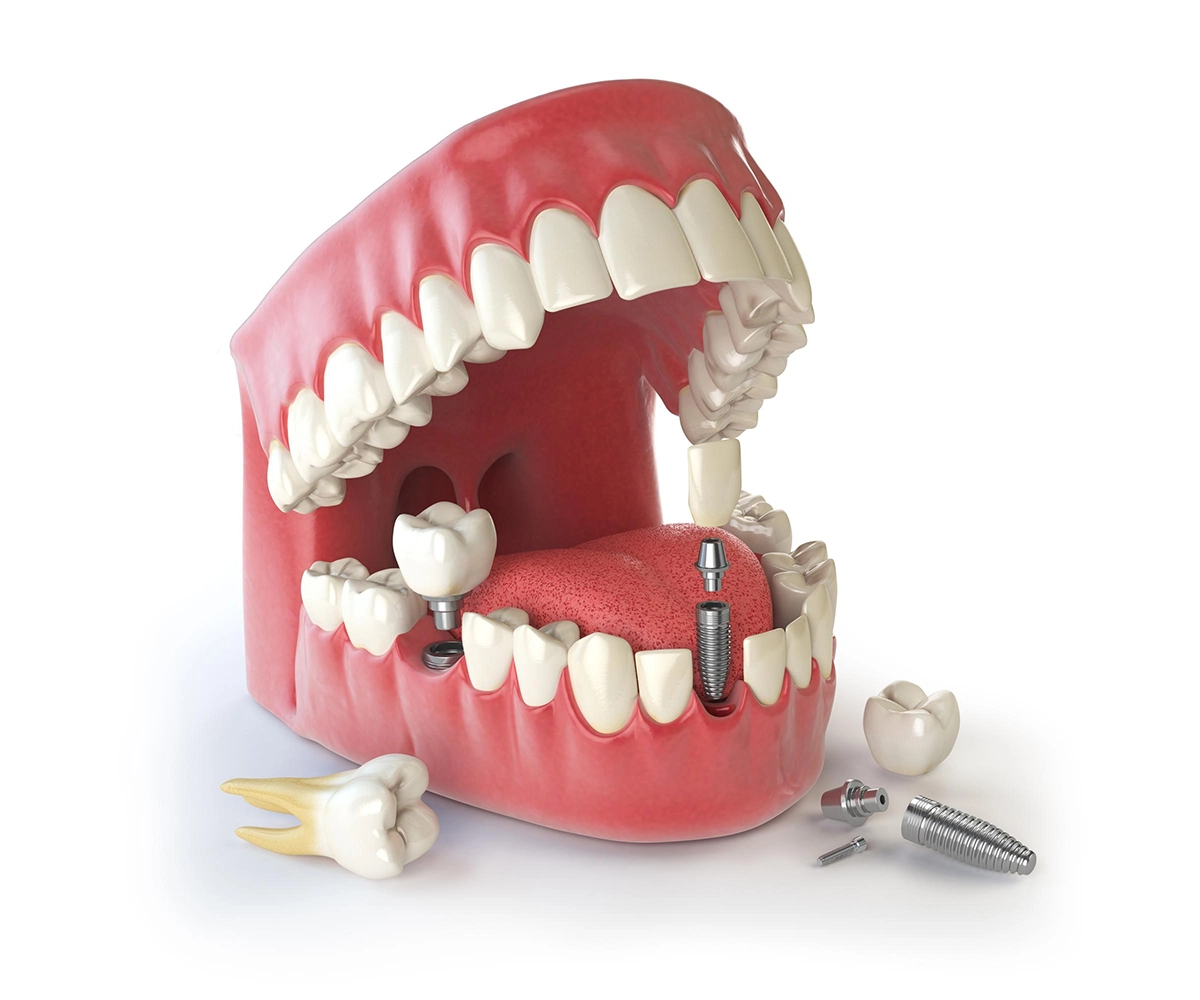Dental implants are a powerful and durable option for restoring the functionality and aesthetics of lost teeth. However, in some cases, to successfully place a dental implant, it may be necessary to add a sufficient amount of bone to the patient’s jaw. This process is known as bone augmentation for dental implants and is a surgical procedure used to create a strong support for the implant when there is bone loss or insufficient bone density.
In this article, we will discuss what bone implants are, why they are necessary, and how this treatment is performed.
Why is Bone Grafting Necessary for Dental Implants?
Dental implants are designed to be placed in the jawbone to replace the function of natural teeth. However, for a successful implant, it is essential that the jawbone is sufficient and strong enough to support the implant. When there is bone loss (for example, due to the loss of previous teeth, gum infections, or other dental problems), the bone may not be sufficient to hold the implant.
The causes of bone loss may include:
- Tooth loss: When teeth are lost, the jawbone begins to experience deterioration due to the lack of stimulation provided by the natural tooth during chewing.
- Periodontitis: Infection of the gums can cause bone loss that supports the teeth.
- Aging and degeneration: Over time, bone may lose its natural density and strength, making it insufficient to support an implant.
In such cases, bone grafting is necessary to restore the volume and density of the bone and provide stable support for dental implants.
Types of Bone Grafting Procedures for Dental Implants
There are several different methods that can be used to add bone to the area where the implant will be placed. Here are some of the most common methods:
1.Bone Grafting (Bone Transplant)
This is a procedure where bone material is used to regenerate and add bone to the jaw. There are several options for sourcing the bone material:
- Bone Taken from the Patient (Autograft): Bone is taken from another part of the patient’s body (usually from the jawbone, outside the jaw, or from the ankle joint) and used to add bone to the damaged area.
- Bone Taken from a Donor (Allograft): Bone donated by another individual (not the patient themselves). This can be an option when using the patient’s own bone is not possible.
- Synthetic Bone (Xenograft): Synthesized materials that mimic natural bone and can be used to stimulate the growth of new bone.
- Bleached Bone (Alloplast): This is a lab-created material used to support bone growth.
2. Bone Augmentation through Bone Movement (Sinus Lift
This procedure is commonly used to add bone to the upper jaw areas, particularly in regions where the bone is weak after tooth loss. The “sinus lift” procedure involves lifting the membrane that covers the maxillary sinus and adding bone graft material into the space created to increase the bone volume in this area.
3. Bone Grafting with Support (Block Grafting)
In some cases, it may be necessary to use large pieces of bone (block grafts) to create strong support. This can be done to fill a significant bone loss and provide a solid foundation for the implant.
How is the Bone Grafting Procedure Performed?
The bone grafting procedure for dental implants is performed under local anesthesia and may require a short recovery period after the surgery. Here’s how the process works:
-
Treatment Evaluation and Planning: The dentist will perform a thorough assessment of the jaw and analyze radiographs or 3D images to understand the amount of remaining bone and accurately plan where and how to perform the bone grafting.
- Creating Space for New Bone: During the surgical procedure, the dentist creates the necessary space and then places the bone material in the damaged area. This may include using a special covering to hold the bone in place.
- Healing and Regeneration: After the surgery, the body will begin the healing process. The new bone will integrate with the existing bone over a period of several months, providing a strong foundation for the implant.
- Placing the Dental Implant: Once the bone has healed and has gained sufficient strength, the dentist can proceed with placing the dental implant.
Care After the Procedure and Healing Time
After the bone grafting procedure, you may experience mild pain and swelling, but this is normal. Dentists may recommend the use of pain medication and a post-operative oral care routine, including avoiding hard foods and carefully cleaning the mouth.
The healing time may range from 4 to 6 months, depending on the type of procedure and materials used for the bone graft. After this period, the dental implant can be safely installed.

